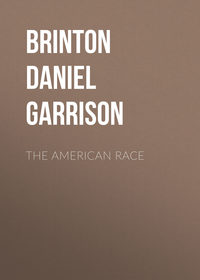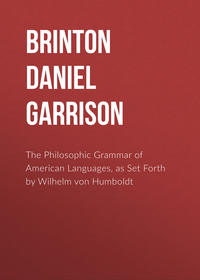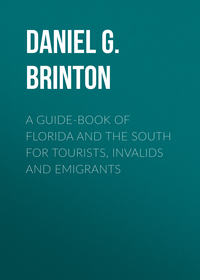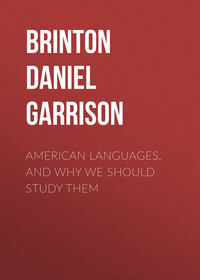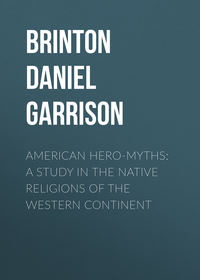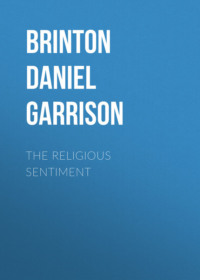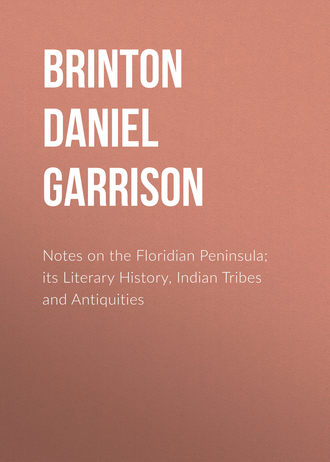 полная версия
полная версияNotes on the Floridian Peninsula; its Literary History, Indian Tribes and Antiquities
Neither were general internal improvements slighted. A project was set on foot to avoid the dangerous navigation round the Florida Keys by direct transportation across the neck of the peninsula—a design that has ever been the darling hobby of ambitious Floridians since they became members of our confederacy, and which at length seems destined to be fulfilled. Now railroads, in that day canals were to be the means. As early as 1828, General Bernard, who had been dispatched for the purpose, had completed two levellings for canal routes, had sketched an accurate map on an extended scale, and had laid before the general government a report embracing a topographical and hydrographical description of the territory, the result of his surveys, with remarks on the inland navigation of the coast from Tampa to the head of the delta of the Mississippi, and the possible and actual improvements therein.102 Notwithstanding these magnificent preparations, it is unnecessary to add, the canal is still unborn.
One great drawback to the progress of the territory was the uncertainty of Land Titles. During the Spanish administration nearly the whole had been parcelled out and conferred in grants by the king. Old claims, dating back to the British regime, added to the confusion. Many of both had been sold and resold to both Spanish and American citizens. In the Appendix to Vignoles, and in Williams’ View of West Florida, many pages are devoted to this weighty and very intricate subject. Some of these claims were of enormous extent. Such was that of Mr. Hackley, which embraced the whole Gulf coast of the peninsula and reached many miles inland. This tract had been a grant of His Catholic Majesty to the Duke of Alagon, and it was an express stipulation on the part of the United States, acceded to by the king, that it should be annulled. But meanwhile the Duke had sold out to Mr. Hackley and others, who claimed that the king could not legally dispossess American citizens. A pamphlet was published103 containing all the documents relating to the question, and the elaborate opinions of several leading lawyers, all but one in favor of Mr. Hackley. After a protracted suit, the Gordian knot was finally severed by an ex post facto decree of His Majesty, that a crown grant to a subject was in any case inalienable, least of all to a foreigner.
The work of Col. John Lee Williams just mentioned,104 though ostensibly devoted to West Florida takes a wider sweep than the title page denotes. Its author went to Florida in 1820, and was one of the commissioners appointed to locate the seat of government. While busied with this, he was struck with the marked deficiency of all the then published maps of the country, “and for my own satisfaction,” he adds, “I made a minute survey of the coast from St. Andrew’s Bay to the Suwannee, as well as the interior of the country in which Tallahassie is situated.” A letter from Judge Brackenridge, alcalde of St. Augustine, principally consisting of quotations from Roberts, is all that touches on antiquities. Except this, and some accounts of the early operations of the Americans in obtaining possession, and the statements concerning Land Titles, the book is taken up with discussions of proposed internal improvements of very local and ephemeral interest.
All the details of any value that it contains he subsequently incorporated in his Civil and Natural History of the Territory,105 published ten years later. Most of the intervening time he spent in arduous personal researches; to quote his own words, “I have traversed the country in various directions, and have coasted the whole peninsula from Pensacola to St. Mary’s, examining with minute attention the various Keys or Islets on the margin of the coast. I have ascended many of the rivers, explored the lagoons and bays, traced the ancient improvements, scattered ruins, and its natural productions by land and by water.” Hence the chief value of the work is as a gazetteer. The civil history is a mere compilation, collected without criticism, and arranged without judgment; an entire ignorance of other languages, and the paucity of materials in our own, incapacitated Williams from achieving anything more. Nor can he claim to be much of a naturalist, for the frequent typographical errors in the botanical names proclaim him largely debtor to others in this department. His style is eminently dry and difficult to labor through, and must ever confine the History to the shelf as a work of reference, and to the closet of the painful student. Yet with all its faults—and they are neither few nor slight—this is the most complete work ever published concerning the territory of Florida; it is the fruit of years of laborious investigation, of absorbing devotion to one object, often of keen mental and bodily suffering, and will ever remain a witness to the energy and zeal of its writer.
As little is recorded about this author pioneer, I may perhaps be excused for turning aside to recall a few personal recollections. It had long been my desire to visit and converse with him about the early days of the state, and with this object, on the 9th of November, 1856, I stopped at the little town of Picolati, near which he lived. A sad surprise awaited me; he had died on the 7th of the month and had been buried the day before my arrival. I walked through the woods to his house. It was a rotten, ruinous, frame tenement on the banks of the St. Johns, about half a mile below the town, fronted by a row of noble live oaks and surrounded by the forest. Here the old man—he was over eighty at the time of his death—had lived for twenty years almost entirely alone, and much of the time in abject poverty. A trader happened to be with him during his last illness, who told me some incidents of his history. His mind retained its vigor to the last, and within a week of his death he was actively employed in various literary avocations, among which was the preparation of an improved edition of his History, which he had very nearly completed. At the very moment the paralytic stroke, from which he died, seized him, he had the pen in his hand writing a novel, the scene of which was laid in China! His disposition was uncommonly aimable and engaging, and so much was he beloved by the Indians, that throughout the horrible atrocities of the Seminole war, when all the planters had fled or been butchered, when neither sex nor age was a protection, when Picolati was burned and St. Augustine threatened, he continued to live unharmed in his old house, though a companion was shot dead on the threshold. What the savage respected and loved, the civilized man thought weakness and despised; this very goodness of heart made him the object of innumerable petty impositions from the low whites, his neighbors. In the words of my informant, “he was too good for the people of these parts.” During his lonely old age he solaced himself with botany and horticulture, priding himself on keeping the best garden in the vicinity. “Come, and I will show you his grave,” said the trader, and added with a touch of feeling I hardly expected, “he left no directions about it, so I made it in the spot he used to love the best of all.” He took me to the south-eastern corner of the neat garden plot. A heap of fresh earth with rough, round, pine sticks at head and foot, marked the spot. It was a solemn and impressive moment. The lengthening shadows of the forest crept over us, the wind moaned in the pines and whistled drearily through the sere grass, and the ripples of the river broke monotonously on the shore. All trace of the grave will soon be obliterated, the very spot forgotten, and the garden lie a waste, but the results of his long and toilsome life “in books recorded” will live when the marbles and monumental brasses of many of his cotemporaries shall be no more.
The next event that attracted general attention to Florida was the bloody and disastrous second Seminole war, which for deeds of atrocious barbarity, both on the part of the whites and red men, equals, if it does not surpass, any conflict that has ever stained the soil of our country.
The earliest work relative to it was published anonymously in 1836, by an officer in the army.106 He gives an impartial account of the causes that gave rise to the war, the manifold insults and aggressions that finally goaded the Indians to desperation, and the incidents of the first campaign undertaken to punish them for their contumacy. It is well and clearly written, and coming from the pen of a participant in many of the scenes described, merits a place in the library of the historian.
The year subsequent, Mr. M. M. Cohen of Charleston, issued a notice of the proceedings in the peninsula.107 He was an “officer of the left wing,” and had spent about five months with the army, during which time it marched from St. Augustine to Volusia, thence to Tampa, and back again to St. Augustine. The author tells us in his Preface, “our book has been put to press in less than thirty days from its being undertaken;” a statement no one will be inclined to doubt, as it is little more than a farrago of vapid puns and stale witticisms, hurriedly scraped together into a slim volume, and connected by a slender string of facts. An account of the imprisonment of Oceola and the enslavement of his wife, has been given by the same writer,108 and has received praise for its accuracy.
In 1836, when the war was at its height, an Indian boy was taken prisoner by a party of American soldiers near Newnansville. Contrary to custom his life was spared, and the next year he was handed over to the care of an English gentleman then resident in the country. From his own account, drawn from him after long persuasion, his name was Nikkanoche, his father was the unhappy Econchatti-mico, and consequently he was nephew to the famous chief Oceola, (Ass-se-he-ho-lar, Rising Sun, Powell.) His guardian removed with him to England in 1840, and the year after his arrival there, published an account of the parentage, early days, and nation of his ward,109 the young Prince of Econchatti, as he was styled. It forms an interesting and pleasant little volume, though I do not know what amount of reliance can be placed on the facts asserted.
An excellent article on the war, which merits careful reading from any one desirous of thoroughly sifting the question, may be found in the fifty-fourth volume of the North American Review, (1842,) prepared with reference to Mr. Horace Everett’s remarks on the Army Appropriation Bill of July 14, 1840, and to a letter from the Secretary of War on the expenditure for supporting hostilities in Florida.
Though the above memoirs are of use in throwing additional light on some points, and settling certain mooted questions, the standard work of reference on the Florida war is the very able, accurate, and generally impartial History,110 of Captain John T. Sprague, himself a participant in many of its scenes, and officially concerned in its prosecution. Few of our local histories rank higher than this. With a praiseworthy patience of research he goes at length into its causes, commencing with the cession in 1821, details minutely its prosecution till the close in December, 1845, and paints with a vigorous and skillful pen many of those thrilling adventures and affecting passages that marked its progress. A map of the seat of war that accompanies it, drawn up with care, and embracing most of the geographical discoveries made by the various divisions of the army, adds to its value.
Commencing his history with the cession, Captain Sprague does not touch on the earlier troubles with the Seminoles. These were never properly handled previous to the late work of the Hon. J. B. Giddings, entitled, “The Exiles of Florida.”111 These so-called exiles were runaway slaves from the colonies of South Carolina and Georgia, who, quite early in the last century, sought an asylum in the Spanish possessions, formed separate settlements, and, increased by fresh refugees, became ever after a fruitful source of broils and quarrels between the settlers of the rival provinces. As they were often protected, and by marriage and situation became closely connected with the Lower Creeks, they were generally identified with them in action under the common name of Seminoles. Thus the history of one includes that of the other. The profound acquaintance with the transactions of our government acquired by Mr. Giddings during a long and honorable public service, render his work an able plea in the cause of the people whose wrongs and sufferings have enlisted his sympathy; but unquestionably the fervor of his views prevents him from doing full justice to their adversaries. He attaches less weight than is right to the strict legality of most of the claims for slaves; and forgets to narrate the inhuman cruelties, shocking even to the red men, wreaked by these maroons on their innocent captives, which palliate, if they do not excuse, the rancorous hatred with which they were pursued by the whites. Including their history from their origin till 1853, the second Seminole war occupies much of his attention, and the treatment both of it and the other topics, prove the writer a capable historian, as well as an accomplished statesman.
It is unnecessary to specify the numerous reports of the officers, the official correspondence, the speeches of members of Congress, and other public writings that illustrate the history of the war, which are contained in the Executive Documents. But I should not omit to mention that the troubles in Florida during the last few years have given occasion to the publication of the only at all accurate description of the southern extremity of the peninsula in existence.112 It was issued for the use of the army, from inedited reports of officers during the second Seminole war, and lays down and describes topographically nine routes to and from the principal military posts south of Tampa Bay.
The works relating to St. Augustine next claim our attention. Of late years this has become quite a favorite rendezvous for casual tourists, invalids from the north, magazine writers, et id omne genus, whence to indite letters redolent of tropic skies, broken ruins, balmy moonlight, and lustrous-eyed beauties. Though it would be lost time to enumerate these, yet among books of general travel, there are one or two of interest in this connection. Among these is an unpretending little volume that appeared anonymously at New York in 1839.113 The author, a victim of asthma, had visited both St. Augustine and Key West in the spring of that year. Though written in a somewhat querulous tone, it contains some serviceable hints to invalids expecting to spend a winter in warmer climes.
Neither ought we to pass by in silence the Floridian notes of the “Hon. Miss Amelia M. Murray,”114 who, it will be recollected, a few years since took a contemptuous glance at our country from Maine to Louisiana, weighed it in the balance of her judgment, and pronounced it wanting in most of the elements of civilization. She went on a week’s scout into Florida, found the charges exorbitant, the government wretchedly conducted, and the people boors; was deeply disappointed with St. Augustine and harbor because an island shut out the view of the ocean, and at Silver Spring found nothing more worthy of her pen than the anti-slavery remark of an inn-keeper,—who has himself assured me that she entirely misconstrues even that.
Two works devoted to the Ancient City, as its inhabitants delight to style it, have been published. One of these is a pleasant little hand-book, issued some ten years since by the Rev. Mr. Sewall, Episcopalian minister there.115 He prepared it “to meet the wants of those who may desire to learn something of the place in view of a sojourn, or who may have already come hither in search of health,” and it is well calculated for this purpose. A view of the town from the harbor, (sold also separately,) and sketches of the most remarkable buildings increase its usefulness. A curious incident connected with this book is worth relating for the light it throws on the character of the so-called Minorcans of St. Augustine. In one part Mr. Sewall had inserted a passage somewhat depreciatory of this class. When the edition arrived and this became generally known, they formed a mob, surrounded the store where it was deposited, and could only be restrained from destroying the whole by a promise that the obnoxious leaf should be cut from every volume in the package. This was done, and the copy I purchased there accordingly lacks the thirty-eighth and thirty-ninth pages. An action on their part that calls to mind the ancient saw, “’Tis the tight shoe that pinches.”
Another and later work that enters into the subject more at length, has recently appeared from the competent pen of G. R. Fairbanks,116 a resident of the spot, and a close student of the chronicles of the old colony. The rise and progress of the settlements both French and Spanish are given in detail and with general accuracy, and though his account of the former is not so finished nor so thoroughly digested as that of Sparks, consisting of little more than extracts linked together, we have no other work in our language so full on the doings of the subjects of His Catholic Majesty in Florida, and the gradual growth of the Ancient City. It thus fills up a long standing hiatus in our popular historical literature.
Numerous articles on Florida have appeared in various American periodicals, but so few of any value that as a class they do not merit attention. Most of them are flighty descriptions of scenery, second-hand morsels of history, and empty political disquisitions. Some of the best I have referred to in connection with the points they illustrate, while the Index of Mr. Poole, a work invaluable to American scholars, obviates the necessity of a more extended reference.
Those that have appeared in the serials of Europe, on the other hand, as they mostly contain original matter, so they must not be passed over so lightly.
Though not strictly included among them, the article on Florida prepared by Mr. Warden for that portion of L’Art de Verifier les Dates called Historical Chronology of America, will come under our notice here. In a compendium parading such a pretentious title as this we have a right to expect at least an average accuracy, but this portion bears on its face obvious marks of haste, negligence, and a culpable lack of criticism, and is redeemed by nothing but a few excerpts from rare books.
Little attention has ever been paid to the natural history of the country, least of all by Americans. The best observer of late years has been M. de Castelnau, who, sent out by the Academie des Sciences to collect and observe in this department, spent in Middle Florida one of the seven years he passed in America. While the Seminole war was raging, and a mutual slaughter giving over the peninsula once more to its pristine wilderness, in the gloomy hammocks of the Suwannee and throughout the lofty forests that stretch between this river and the Apalachicola, this naturalist was pursuing his peaceful avocation undisturbed by the discord around him. In April, 1842, after his return, he submitted to the Academy a memoir on this portion of his investigations.117 It is divided into three sections, the first a geographical description, the second treating of the climate, hygienic condition, geology, and agriculture, while the third is devoted to anthropology, as exhibited here in its three phases, the red, the white, and the black man. In one passage,118 speaking of the history of the country, this author remarks that M. Lakanal “has, during his long sojourn at Mobile, just on the confines of Florida, collected numerous documents relative to the latter country; but the important labors of our venerable colleague have not yet been published.” As far as I can learn, these doubtless valuable additions to our history are still inedited.
The subjoined list of some other articles published in Europe is extracted from Dr. W. Koner’s excellent catalogue.119
1832. De Mobile, Excursion dans l’Alabama et les Florides. Revue des Deux Mondes, T. I., p. 128.
1835. Beitrage zur Näheren Kenntniss von Florida. Anal. der Erdkunde, B. XII., s. 336.
1836. Castelnau, Note sur la Source de la Riviére de Walkulla dans la Floride. Soc. de Geographie, II. ser., T. XI., p. 242.
1839. David, Aperçu Statistique sur la Floride Soc. de Geog., II., ser., Tom. XIV., p. 144.
1842. Castelnau, Note de deux Itineraires de Charleston à Tallahassie. Soc. de Geog. T. XVIII., p. 241.
1843. Castelnau, Essai sur la Floride du Milieu. Annales de Voyages, T. IV., p. 129.
1843. De Quatrefages, La Floride. Revue des Deux Mondes, nouv. ser., T. I., p. 774.
§ 7.—Maps And Charts
Though the need of a good history of the most important maps and charts of America, enriched by copies of the most interesting, cannot but have been felt by every one who has spent much time in the study of its first settlement and growth, such a work still remains a desideratum in our literature. As a trifling aid to any who may hereafter engage in an undertaking of this kind, and as an assistance to the future historian of that portion of our country, I add a brief notice of those that best illustrate the progress of geographical knowledge respecting Florida.
On the earliest extant sketch of the New World—, that made by Juan de Cosa in 1500—, a continuous coast line running east and northeast connects the southern continent to the shores of the Mar descubierta por Ingleses in the extreme north. No signs of a peninsula are visible.
Eight years later, on the Universalior cogniti Orbis Tabula, of Johannes Ruysch found in the geography of Ptolemy printed at Rome under the supervision of Marcus Beneventanus and Johannes Gotta, the whole of North America is included in a small body of land marked Terra Nova or Baccalauras,120 joined to the countries of Gog and Magog and the desertum Lob in Asia. A cape stretching out towards Cuba is called Cabo de Portugesi.121
This brings us to the enigmatical map in the magnificent folio edition of Ptolemy, printed at Venice in 1513. On this, North America is an oblong parallelogram of land with an irregularly shaped portion projecting from its south-eastern extremity, maintaining with general correctness the outlines and direction of the peninsula of Florida. A number of capes and rivers are marked along its shores, some of the names evidently Portugese, others Spanish. Now as Leon first saw Florida in 1512, and the report of his discovery did not reach Europe for years, whence came this knowledge of the northern continent? Santarem and Ghillany both confess that there were voyages to the New World undertaken by Portuguese in the first decade of the century, about which all else but the mere fact of their existence have escaped the most laborious investigations; hence, probably to one of these unknown navigators we are to ascribe the honor of being the first discoverer of Florida, and the source of the information displayed by the editors of this copy of Ptolemy.122
The first outline of the coast drawn from known observation is the Traza de las Costas de Tierra Firme y de las Tierras Nuevas, accompanying the royal grant of those parts to Francisco de Garay in the year 1521. It has been published by Navarrete, and by Buckingham Smith. Contrary to the usual opinion of the day, which was not proved incorrect till the voyages of Francesco Fernandez de Cordova (1517), and more conclusively by that of Estevan Gomez (1525), the peninsula is attached to the mainland. This and other reasons render it probable that it was drawn up under the supervision of Anton de Alaminos, pilot of Leon on his first voyage, who ever denied the existence of an intervening strait.123 I cannot agree with Mr. Smith that it points to any prior discoveries unknown to us.
On some early maps, as one in the quarto geography of Ptolemy of 1525, the region of Florida is marked Parias. This name, originally given by Columbus to an island of the West Indian archipelago, and so laid down on the “figura ò pintura de la tierra,” which he forwarded to Ferdinand the Catholic in 1499,124 was quite wildly applied by subsequent geographers to Peru, to the region on the shore of the Caribbean Sea, to the whole of South America, to the southern extremity of North America where Nicaragua now is, and finally to the peninsula of Florida.
We have seen that early maps prove De Leon was not, as is commonly supposed, the first to see and name the Land of Flowers (Terra Florida); neither did his discoveries first expand a knowledge of it in Europe. Probably all that was known by professed geographers regarding it for a long time after was the product of later explorations, for not till forty years from the date of his first voyage was there a chart published containing the name he applied to the peninsula. This is the one called Novae Insulae, in the Geographia Claudii Ptolemaei, Basileae, 1552.125




